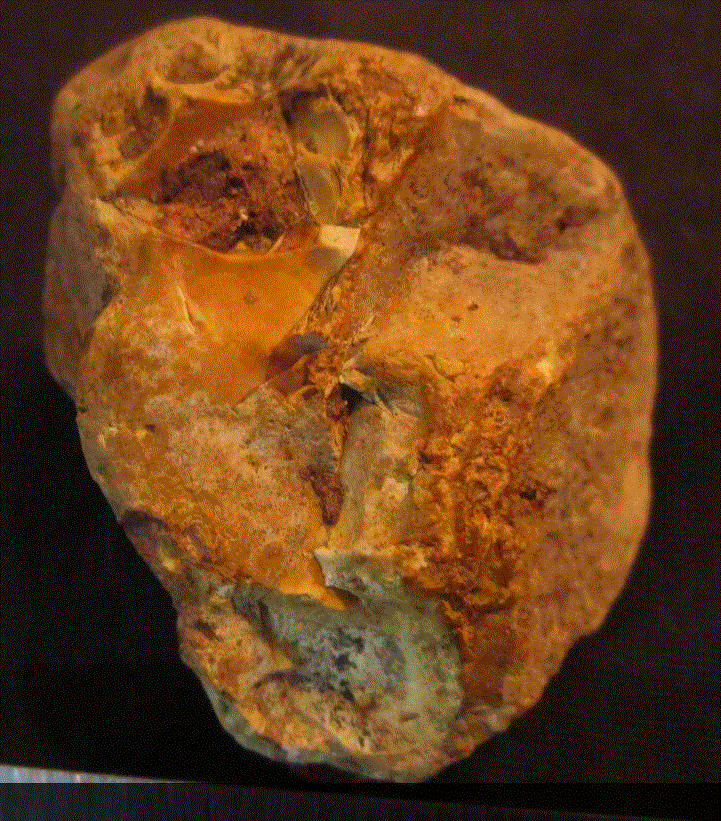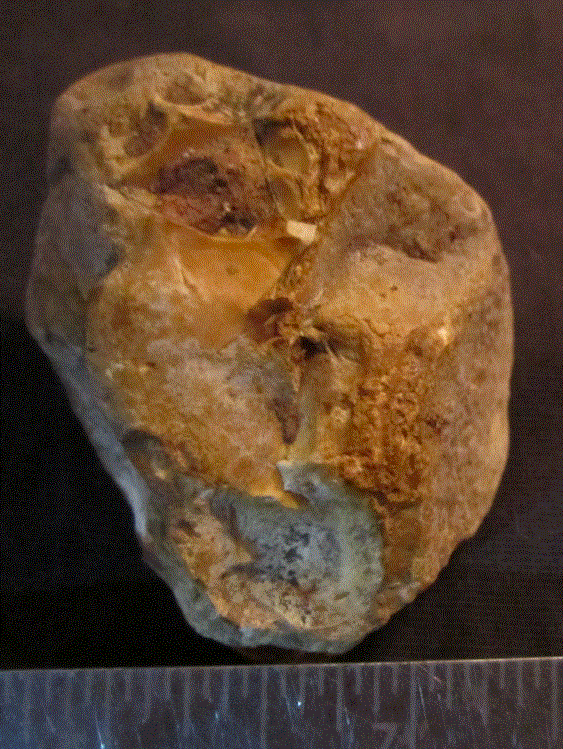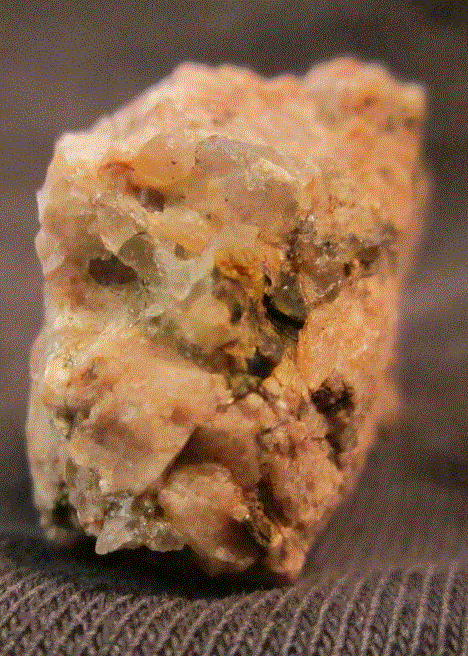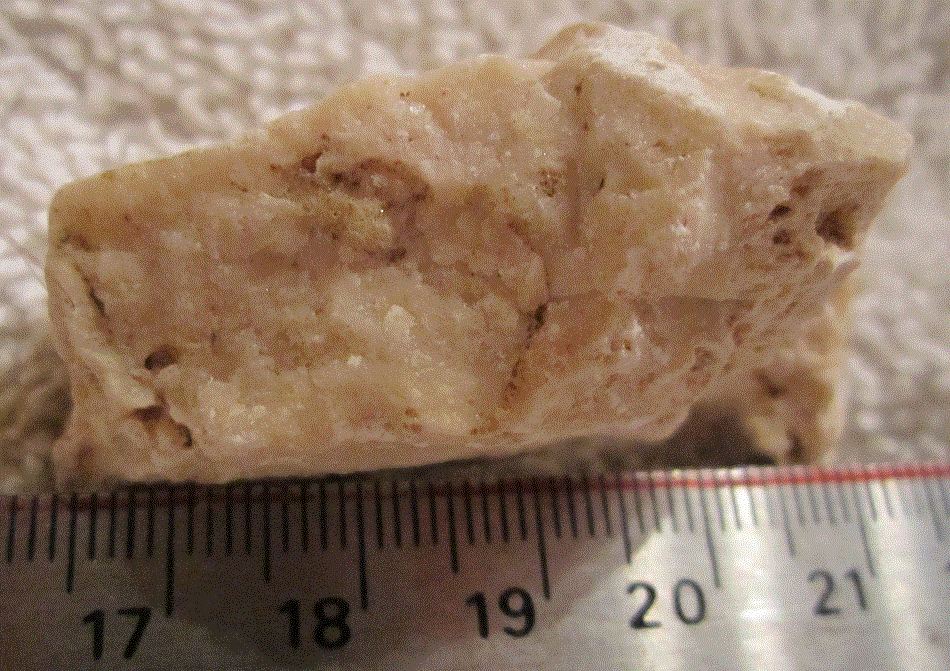Find by Ken Johnston at a Flint Ridge quarry and workshop location, Licking County, Ohio. 8.5cm length.
A black bird sculpture centered on a white bivalve shell fossil. The bird's beak is at far left, tail at far right. The fossil shell was probably identified on a larger stone and then it was reduced as the bird form was sculpted to feature the shell. Perhaps "doing justice" to the fossil meant giving it to a bird form and adding a human face depiction. Flint Ridge has produced many bird figures already seen on this blog. This is a classic simple bird profile sculpture.
Image of the West Tofts, U.K,, handaxe, ca. 100,000 BP, centered on a bivalve fossil
This picture has been cut from the photo at top of the Licking County, Ohio, bird sculpture artifact. This open-mouthed face image with a blooming shell "hairdo" is particularly interesting given the comment of Jan Evert Musch regarding the details of the West Tofts handaxe at the link above and its possible inclusion of human imagery related to the shell.





+mark+2+pub.gif)
































+crop.jpg)
















